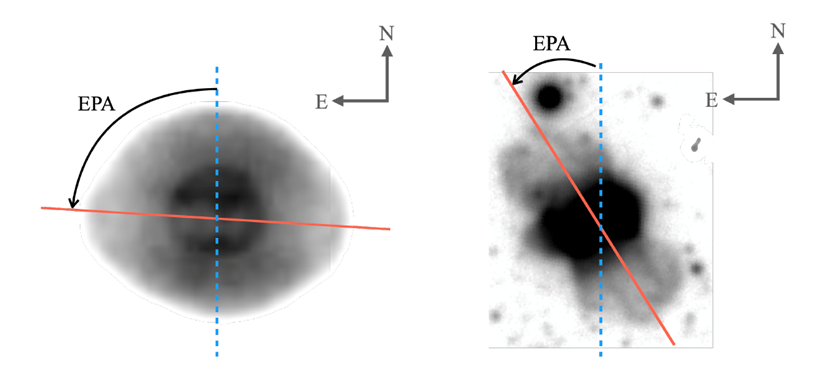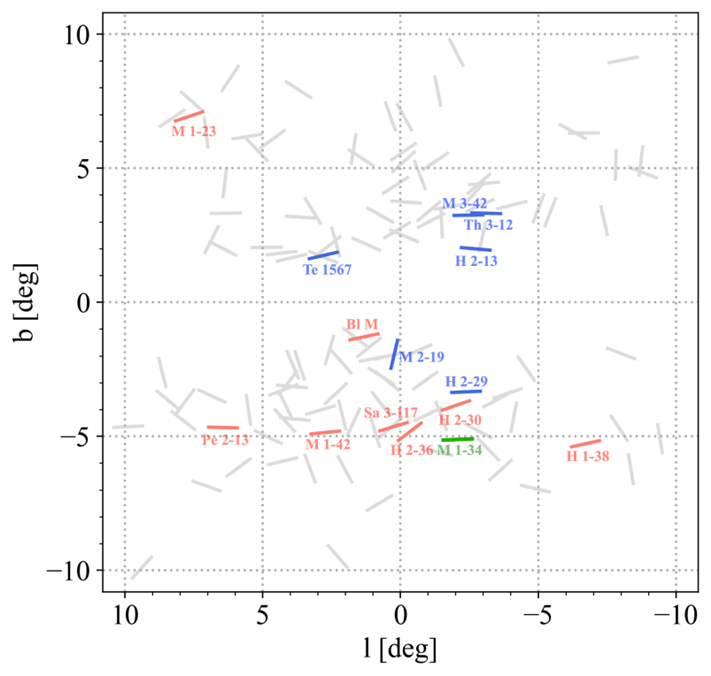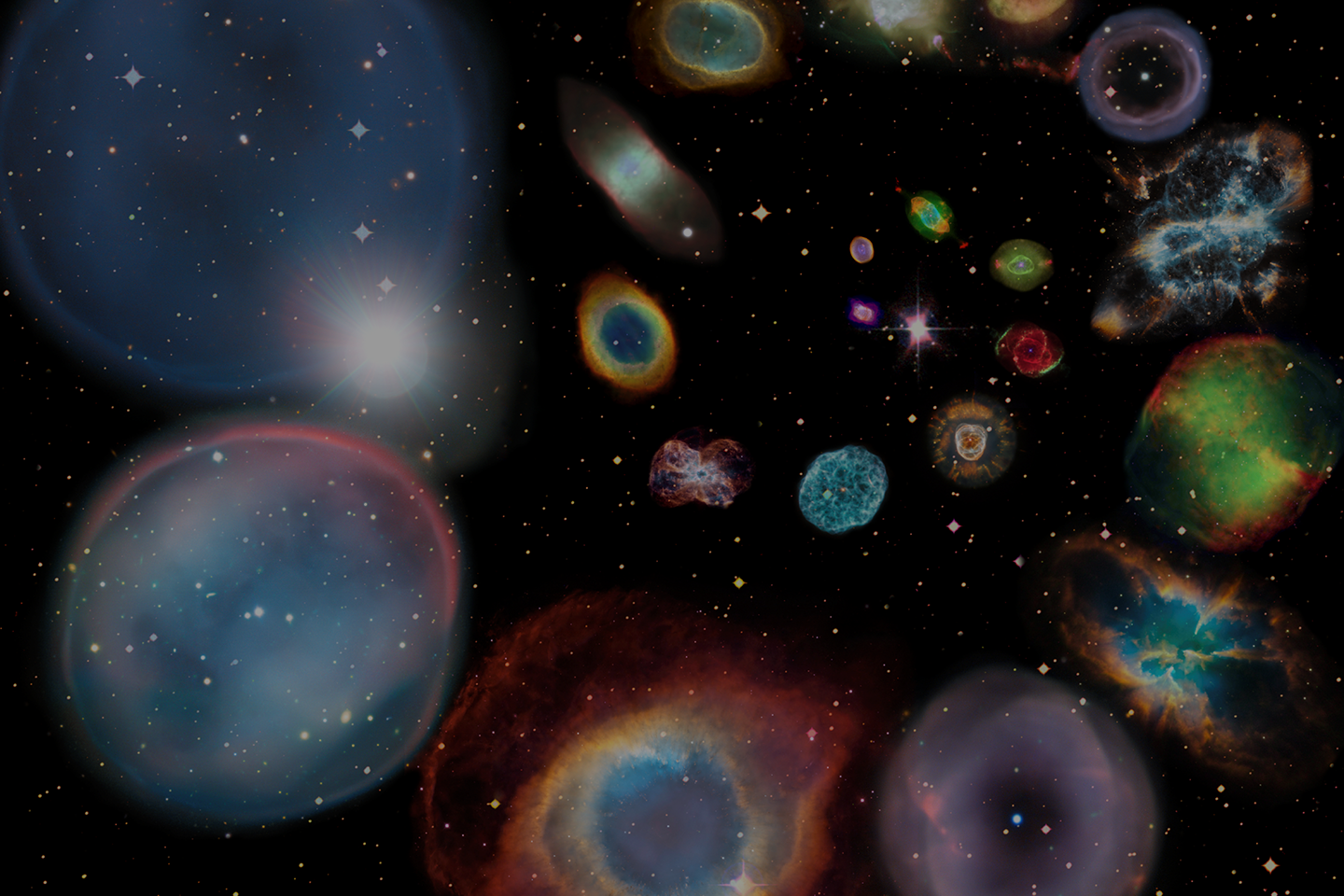Sometimes, as a scientist, and if you are very lucky, you come across something so crazy in your research that you have to step back and think what on earth is going on? This article addresses this crazy story in terms of how it actually happened – this is sometimes how real science emerges.
Occasionally, we are fortunate to put out press releases about various scientific discoveries of my team that we consider sufficiently worthy to merit such a thing. These can elicit interviews, quotes and positive publicity for our activities and sometimes they go viral. This was the case with a press release back in July 2023 that went viral and led to a popular science magazine article, a 10-minute YouTube video on our research from a major science influencer that has garnered 100K views and a further professional American Astronomical Society (AAS) YouTube interview that has had more views than nearly all other videos of its kind that arise from the major AAS refereed journal articles such as ours. These are all indicative of the impact and importance of this "weird science result" as will be clear below.
All this interest was created by our recent paper in the prestigious Astrophysical Journal (ApJ) letters that describes a discovery and result that is of extreme statistical significance that is both bizarre and very difficult to explain. ApJ Letters is a rapid publication, high-value scientific journal that allows astrophysicists to publish short articles of significant, original research that are impactful, broadly understandable and timely. Indeed, any interested reader can go straight to the source of our results here: https://iopscience.iop.org/article/10.3847/2041-8213/acdbcd.
Our findings will, we believe, have profound implications for understanding the formation and evolution of our own Galaxy and its beating heart. It is mysterious, perplexing and spooky….
Like many things in science it arose somewhat serendipitously while we were working on something else. Allow me to explain.
My team, which included the co-author who is an extremely diligent research assistant, have been tackling a superb and extensive spectroscopic data set from the European Southern Observatory Very Large Telescope (ESO VLT) 8.2m "FORS2" spectrograph, together with associated narrow-band imaging taken at the same time for field acquisition. This was supplemented with even higher quality archival imaging from the Hubble Space Telescope which were readily available. These data were originally taken for a PhD project of a researcher, along with Prof Zijlstra and the author as co-investigators on the ESO proposals. The observations were accumulated over several years between 2015 and 2018 given the filler nature of the approved ESO observing program. By the end we had acquired deep, high S/N spectral observations and quality imaging for 136 objects. However, up until now these valuable data have not been fully exploited. Admittedly, it is far from unusual to find papers that finally get written based on data first taken eight years earlier. Indeed, many papers never get written at all with the potentially valuable data languishing on an old magnetic tape, hard drive or sitting unloved but accessible on an observatory archive somewhere.

Three of the four ESO 8m telescopes in a view taken by the author QAP in June 2019 for another PN follow-up program.
The data of relevance here concerns objects known as planetary nebulae (PNe) – the beautiful, glowing, ejected, gaseous shrouds of dying stars. Indeed, our own Sun will eventually become one in about 4 billion years. These objects are often in the news as their mysterious forms are a photogenic magnet for general interest used by NASA, ESO, HST and other institutes for education and public outreach. Many of them are shaped like butterflies with the formal name of "Bipolar" PNe due to their visible opposing lobes of ejected gas.
They are also windows into the soul of stellar death, lasting typically for only a few thousand years before they dissipate into interstellar space. This is compared to the billions of years of life for low to intermediate mass stars like our Sun. Such short PNe lifetimes are like the cosmological equivalence of a blink of an eye, effectively an instantaneous snap-shot of stellar death. Despite their brevity PNe are powerful astrophysical tools as their rich emission line spectra (where light is spread out like with a prism) give them their striking colours in public images.
Our now iconic montage of famous PNe, artistically arranged into a spiral pattern with image sizes adjusted to reflect their equivalent physical size is shown in the figure below:

General image credit: ESA/Hubble and NASA, ESO, NOAO/AURA/NSF from an idea and input by the author and Ivan Bojičić with additional input from David Frew
A now iconic collage showing 22 individual well-known PNe, artistically arranged in a spiral pattern by order of approximate physical size. Each nebula's size is calculated from the SB-r statistical distance scale from Frew et al. (2016). It can be applied to PNe exhibiting the entire range of surface brightness, morphology and size. The largest PNe have a surface brightness about a hundred thousand times fainter than the smallest and can reach up to 3 pc across.
As it happens the University of Hong Kong (HKU) hosts one of the leading and strongest global teams working on PNe. Although we have had a few press releases over the last few years including nailing the optical counterpart of the Chinese Guest star of 1181AD (the only recorded Supernova of the last 1000 years without a properly identified source - see Ritter et al., 2021, ApJ Letters, 918, 33) this particular discovery is the strangest we have ever made and may turn out to be the most important.
Our prime mission was to provide the community with the best, most well determined and understood chemical abundances for our carefully controlled sample of PNe in the Galactic Bulge. We followed well established robust selection criteria to ensure our target lists for the ESO VLT comprised PNe that are highly likely to be physical members of our Galactic Bulge and falling within a 10 x 10degree central region. Each PNe was selected to 10 arcseconds in projected angular diameter on the sky or less. We produced this exceptional abundance catalogue in a paper just accepted for publication in a major refereed journal.
PNe are 3-D objects but until detailed kinematic information is available across each PNe needed to de-project each object, we have to make do with measuring their projected sizes and angles.
With a draft paper already taking shape, my team member and co-author came to my office to say she had noticed that if you look at only those few PNe in the sample that have been shown to host close binary central stars (only 6 PNe at this stage) they seemed to have a preferred alignment across the Galactic bulge. Whilst the observation was intriguing the sample size was small. Recalling that we have determined abundances for all 136 PNe in our sample and that there was work that showed that PNe with very high so called "Abundance Discrepancy Factors" (ADF's) were empirically shown extremely likely to be for PNe that host close binary central stars, my team then went on to find any of these high ADF PNe in our sample, add them to the 6 we already had and then look at the alignments again.
This exercise yielded another 9 PNe, increasing the sample of PNe hosting or very likely to host close binary central stars to 15, enough for any effect, if present to be clearer. Upon observing the plot of the GPA's for this sample compared to all the rest a light bulb switched on. It was decided that we needed to concentrate on just this sample by comparison with the rest and try for a top journal like ApJ Letters.
So what did we find?
We found that this very specific sub-class of PNe that have two stars at their centre circling around each other in a short-period binary orbit (i.e. when the stars orbit their common centre of mass closer than Mercury is to our own Sun) have their PNe shapes aligned in the centre of our Galaxy to a very high degree of certainty. The formal statistical result is 5-sigma. Such a result is considered the gold standard for significance and corresponds to about a one-in-3.5million chance that the findings are just the result of random variation – it would be like tossing a coin and calling heads correctly 100 times!
One of these stars in such close orbit binaries is at the stage in its evolution when it ejects its outer gaseous envelope to become a PN. The binary orbit causes the gas ejection directions to be constrained and butterfly shaped forms are the result.

This figure illustrates what we believe is happening as one of the stars in the close binary goes through the PN phase its ejected gaseous envelope gets constrained and the gas flows into opposing bipolar lobes at 90 degrees to the plane of the binary orbit
These bipolar PNe have a major axis and orientation we can measure quite accurately as shown in the figure below:

Measurement of the equatorial position angle (EPA). The orientation axis measured from the projected 2-D image of a bulge PN was determined visually and the axis that best represents the long symmetry of each PN. The left panel shows a typical elliptical PN M 1-20 with a measure EPA of 87◦ according to its major axis from HST observations. The right panel shows bipolar M 1-34 from our sample and an EPA of 31◦ measured from the VLT observation. Note we need to convert an EPA to a Galactic Position angle GPA via GPA = EPA + ψ where ψ is derived using standard relations for spherical triangles – see the paper for details.
Now alignments of PNe have been found at lower statistical significance before, with hints of something going on reported by Weidmann & Diaz, 2008, PASP, 120, 380 and including the work of Dr Bryan Rees published back in 2013 (Rees and Zijlstra 2013, MNRAS, 435, 975) that was the most carefully evaluated. Rees found quite a strong 3-sigma signal in the Bipolar PNe sample in the Bulge that was sufficient for a press release of his own. It had impact but failed to really excite the PN and broader astrophysical community. This was possibly because the result went contrary to expectation and extant paradigms so it was largely ignored. The perceived wisdom is that these orientations should be completely random so these kinds of results were often discounted as they do not fit what is expected. The author actually teaches a course at HKU on paradigm shifts in science and the way science actually works in practice based on the famous Book by Thomas Kuhn so this sociological bias does not surprise to the author. However, we have now not only confirmed the alignment is real at extreme statistical power but also discovered where the signal is coming from. Theorists will now have to sit up and take notice!
The proof of the significance of the alignment was itself a major undertaking as extraordinary results need robust proof. The co-author spent huge effort performing the detailed and various well-established statistical tests and Bayesian analysis needed to ensure all bases were covered in proving the significance of our result. The ApJ Letters journal even got their statistical editor to carefully evaluate our work and give it the green light.
The weak alignment signal previously reported in Weidmann & Dıaz (2008) and even the stronger alignment significance reported by Rees & Zijlstra (2013) for their bipolar sample were both diluted. The actual signal in our study arises solely from a very specific but relatively small PNe sub-sample of short period binary PNe. Once you remove this sample from the general population under study the signal disappears. This is our major discovery.
Our results indicate the presence of an enduring constant process that has influenced this specific sub-set of PNe in the centre of our Milky Way. It is remarkable and difficult to explain.
We suggest the binary stars formed in a strong magnetic field, which influences the axis of the binary star orbit and hence of the resulting bipolar planetary nebulae eject directions during its formation. However, the measurements of this magnetic field are three times weaker than needed to influence the binary star orbits when they are formed. The only alternative is a pervasive force (magnetic?) acting currently only on the bipolar lobe ejection mechanism in PNe hosting short period binaries that is sufficiently strong to align GPA's over the entire Galactic bulge in only a few thousand years.
Further studies are needed but our robust and remarkable findings provide important evidence for a persistent, organised process that has influenced the formation and evolution of stars and their eventual PNe over billions of years and across vast distances. So Ghostly action at a distance across cosmic time.

The distribution of measured GPAs for all PNe in our sample. Grey symbols are for the general sample while PNe with confirmed binary central stars are blue vectors and those with high adfs (that are taken as a reliable proxy for PNe hosting short-period binaries) are pink vectors. M 1-34, suspected of hosting a short period binary, is plotted with a green vector. The usual name of each PNe is plotted under each blue, pink or green vector.
Authors:
Prof Quentin Parker, Director of Laboratory for Space Research and Professor of Faculty of Science, The University of Hong Kong
Ms Shuyu Tan, Research Assistant, Laboratory for Space Research, The University of Hong Kong
December 2023

